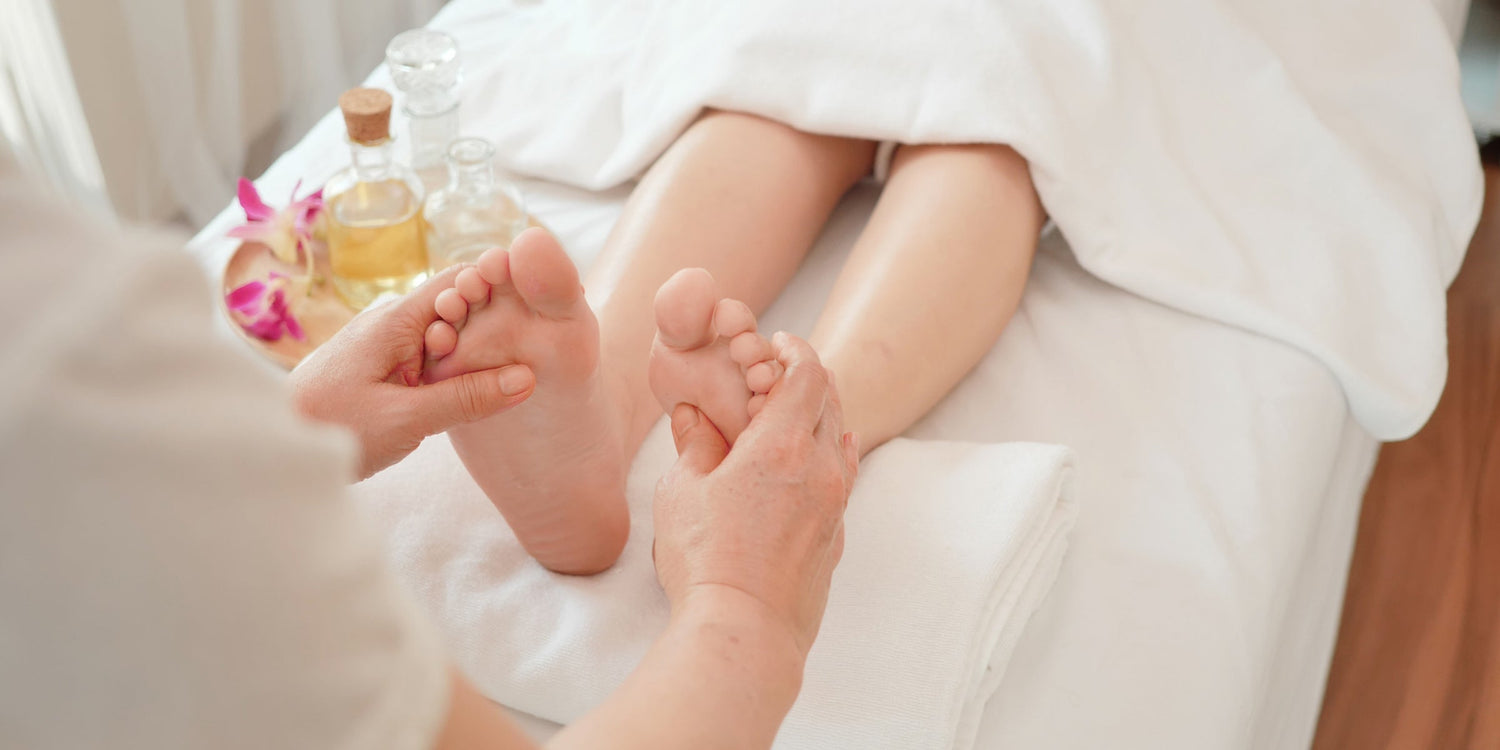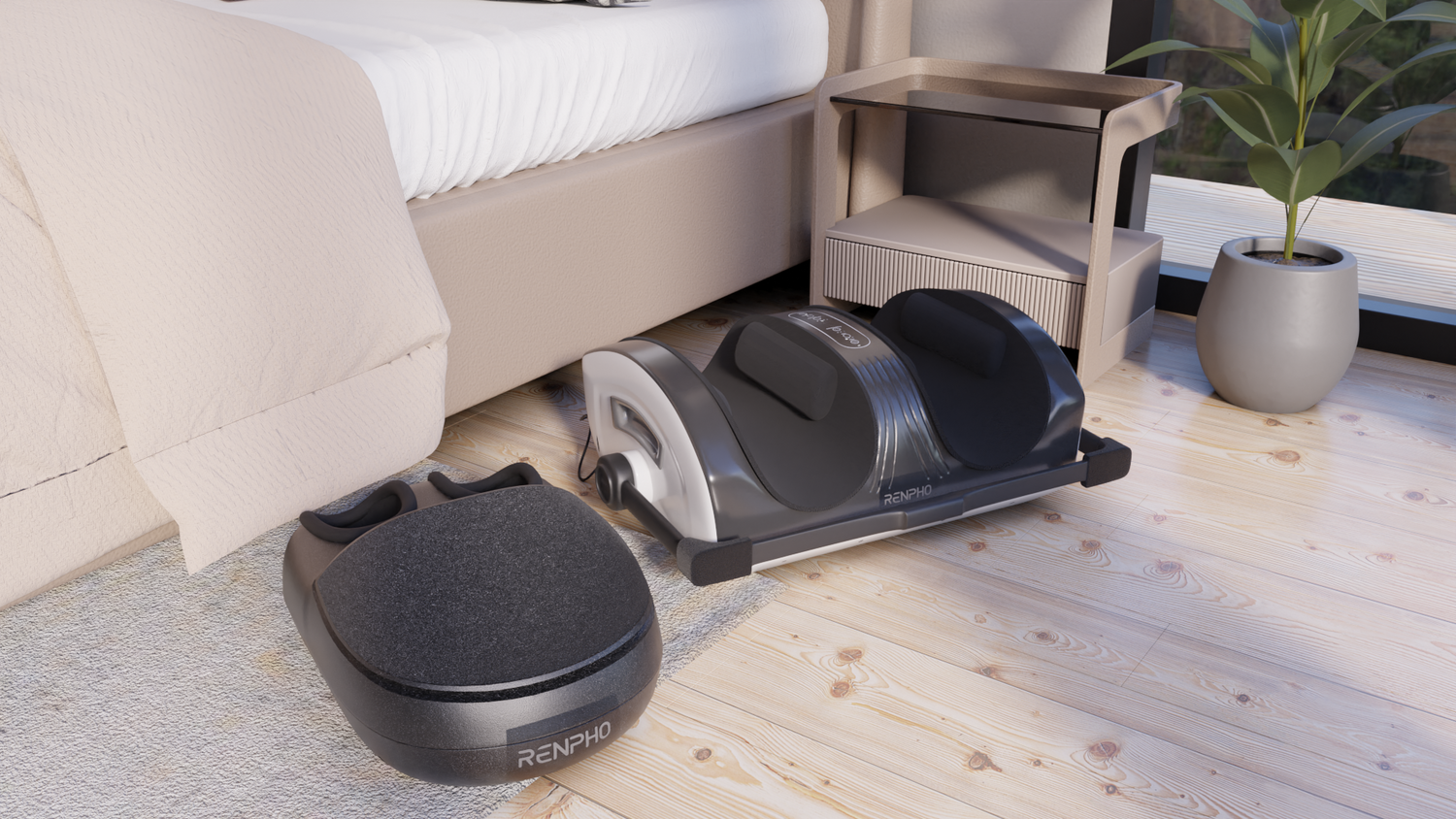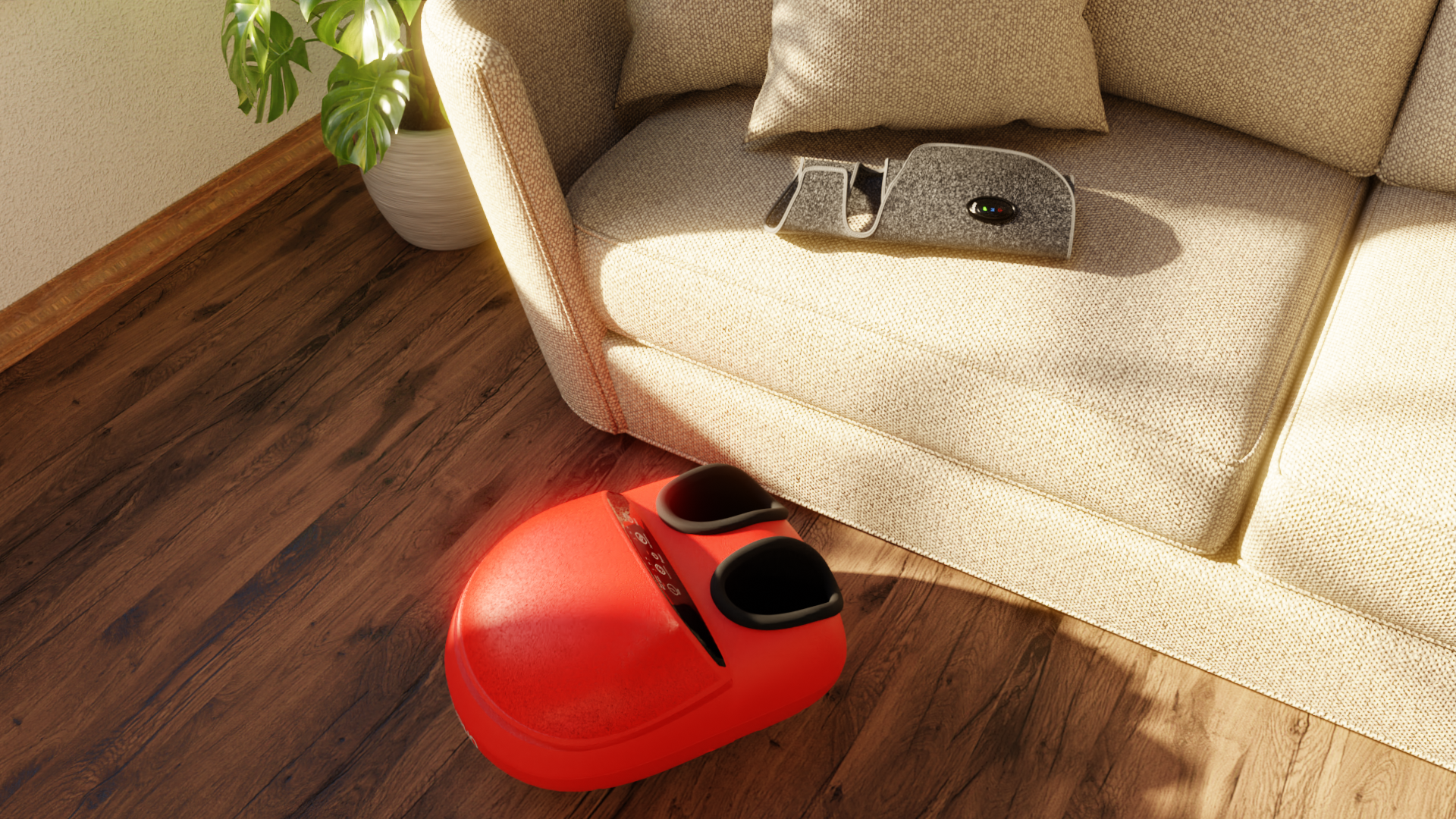Our feet tirelessly carry us from one place to another. From the moment we wake up until we finally rest at night, our feet are constantly working, often under immense pressure and stress. It's no wonder that foot injuries and discomfort are all too common in our fast-paced, demanding world.
But what if there was a simple and enjoyable way to keep our feet happy and healthy? What if a regular foot massage can not only provide relaxation and relief but can also play a crucial role in preventing foot injuries?
So, let’s explore the incredible benefits of regular foot massage in maintaining the well-being of our feet. Whether you're an athlete seeking to optimize performance, someone who spends long hours on their feet, or simply looking for ways to prioritize your foot health, get ready to learn the secrets to how a regular massage can help prevent foot injuries.
Why Is Foot Injury Prevention Important?

Foot injury prevention is of utmost importance because it plays a significant role in maintaining overall foot health and wellbeing. The feet are an essential part of our body, enabling us to stand, walk, run, and perform various activities. Therefore, preventing foot injuries is crucial to ensure a pain-free and functional lifestyle.
One of the primary benefits of foot injury prevention is the avoidance of pain and discomfort. Foot injuries can be excruciating and can often hinder our daily activities, making it difficult to perform even the simplest tasks. By taking preventive measures, individuals can significantly reduce their chances of experiencing foot injuries and the subsequent pain and discomfort.
Foot massages are an effective way to prevent foot and ankle injuries. Regular foot massages help to improve balance and flexibility by targeting the muscles and ligaments in the feet. By increasing flexibility, foot massages enhance the range of motion in the feet and ankles, reducing the risk of injuries caused by sudden movements or twisted ankles.
In addition to improving balance and flexibility, foot massages also promote circulation. Massaging the feet stimulates blood flow, which helps in delivering oxygen and nutrients to the muscles and tissues. This increased blood flow aids in the recovery process after an injury, as it helps to remove waste products and reduce inflammation.
Moreover, foot massages can alleviate muscle soreness. When the muscles in the feet become fatigued or overworked, they can become sore and painful. Regular foot massages help to relax the muscles, relieving tension and reducing soreness.
To complement foot massages, stretching and strengthening exercises for the foot and ankles are crucial in preventing future injuries and facilitating healing. These exercises help to improve the stability and strength of the feet and ankles, reducing the risk of sprains, strains, and other injuries.
5 Common Foot Injuries

While focusing on the benefits of regular massage in preventing foot injuries is good, it is also essential to understand the specific types of injuries that commonly affect the feet. By recognizing them and understanding their causes, symptoms, and potential treatments, individuals can take proactive measures to maintain healthy and pain-free feet. Let's dive into the five common foot injuries:
- Plantar fasciitis: Plantar fasciitis is one of the most common foot injuries, characterized by inflammation of the plantar fascia—a thick band of tissue that runs along the bottom of the foot, connecting the heel bone to the toes. It is usually caused by overuse, repetitive stress, or excessive strain on the foot. Symptoms include sharp heel pain, especially in the morning or after prolonged periods of rest, and difficulty in walking or standing for long periods. Treatment involves rest, stretching exercises, physical therapy, and the use of orthotic devices or shoe inserts.
- Sprained ankle: An ankle sprain occurs when the ligaments surrounding the ankle joint are stretched or torn due to sudden twisting or rolling of the foot. This injury commonly happens during sports activities or when walking on uneven surfaces. Symptoms include pain, swelling, bruising, and difficulty in walking or bearing weight on the affected foot. Treatment usually involves rest, ice, compression, and elevation (RICE), along with physical therapy exercises to restore strength and stability.
- Achilles tendinitis: Achilles tendinitis is an overuse injury that results in inflammation of the Achilles tendon—a thick band of tissue connecting the calf muscles to the heel bone. It commonly occurs in runners or individuals performing activities that involve repetitive jumping or excessive stress on the tendon. Symptoms include pain and stiffness in the back of the heel, especially in the morning or after physical activity. Treatment includes rest, ice, non-steroidal anti-inflammatory drugs (NSAIDs), stretching exercises, physical therapy, and the use of orthotic devices.
- Stress fractures: Stress fractures are small cracks or breaks in the bones of the foot, usually caused by repetitive stress or overuse. Commonly seen in athletes or individuals engaged in high-impact activities, these fractures often occur in the metatarsal bones—the long bones connecting the toes to the midfoot. Symptoms include localized pain, tenderness, swelling, and difficulty in bearing weight on the affected foot. Treatment involves rest, immobilization using a cast or boot, and sometimes surgical intervention in severe cases.
- Ingrown toenail: An ingrown toenail occurs when the edge or corner of a toenail grows into the surrounding skin, leading to pain, redness, swelling, and infection. This condition is often caused by improper nail trimming, tight shoes, or trauma to the toe. Treatment may involve soaking the foot in warm water, gently lifting the ingrown nail, wearing wider shoes, and in severe cases, surgical removal of the affected nail part.
What Is a Foot Massage?

A foot massage is a therapeutic practice that involves manipulating the muscles and tissues of the feet to promote relaxation and alleviate pain or discomfort. It is a form of massage therapy that focuses specifically on the feet and lower legs.
During a foot massage, various techniques are used to stimulate the feet. These techniques can include rubbing, kneading, stroking, and applying pressure to specific points on the feet. The massage may also involve stretching and gentle manipulation of the ankles and toes.
Foot massages have been practiced for centuries in various cultures around the world, including traditional Chinese medicine and reflexology. Proponents of foot massage believe that certain areas of the feet correspond to specific organs and systems in the body. By stimulating these areas, it is believed to promote overall health and well-being.
Foot massages can be performed by trained massage therapists, reflexologists, or even by using various self-massage techniques and tools at home. It is important to communicate your preferences and any specific concerns or conditions to the massage therapist to ensure that the massage is tailored to your needs.
What Are the Benefits of Foot Massage for Injury Prevention?
Regular foot massages can have numerous benefits for injury prevention. One major advantage is the improvement in circulation that can be achieved through regular foot massages. Massaging the feet stimulates the blood flow, thereby ensuring that oxygen and nutrients are efficiently delivered to the muscles and tissues. This increased circulation can promote faster healing and recovery, reducing the risk of injuries.
Additionally, foot massages can help increase flexibility in the muscles of the feet. By targeting specific pressure points and applying various techniques, foot massages can stretch and relax the muscles, making them more supple and less prone to strains or sprains.
Reducing muscle tension is another key benefit of foot massages. Tight muscles can lead to imbalances in the body's alignment, which can in turn increase the risk of injury. By releasing tension and promoting relaxation in the feet, foot massages can help maintain proper alignment and reduce the strain placed on other parts of the body.
In addition to the physical advantages, foot massages also provide stress relief. Stress can contribute to overuse injuries as it leads to muscle tension and weakness. By promoting relaxation and reducing stress levels, foot massages can effectively prevent overuse injuries.
5 Massage Techniques for Better Foot Health

Massage is a fantastic way to improve foot health and relieve common foot problems. There are five massage techniques that can boost foot health: Swedish massage, Shiatsu massage, deep tissue massage, reflexology, and hot stone massage.
- Swedish massage is a gentle and relaxing technique that increases blood flow and flexibility in the feet. The therapist uses long strokes, kneading, and circular movements to reduce tension and promote relaxation. This technique can alleviate tired and achy feet, as well as reduce swelling in the ankles.
- Shiatsu massage is a Japanese technique that targets pressure points in the feet to stimulate energy flow and promote healing. By applying firm pressure with the fingers, thumbs, and palms, Shiatsu massage can relieve foot pain and improve balance. It is particularly effective in relieving burning heels and sharp arch pain.
- Deep tissue massage focuses on releasing tension in the deeper layers of the muscles and connective tissues. This technique uses more intense pressure and slower strokes to break down knots and tightness. It can effectively alleviate chronic foot pain and plantar fasciitis.
- Reflexology is a massage technique that applies pressure to specific points on the feet that correspond to different organs and systems in the body. By stimulating these reflex points, reflexology can promote overall wellness, reduce stress, and relieve specific foot problems.
- Hot stone massage involves placing smooth, heated stones on specific points of the feet. The heat from the stones penetrates deep into the muscles, promoting relaxation and relieving tension. This technique can reduce swelling in the ankles and soothe overall foot discomfort.
Incorporating these massage techniques into a regular foot care routine can significantly improve foot health and alleviate common symptoms such as tired and achy feet, burning heels, swollen ankles, and sharp arch pain. These massages increase blood flow, flexibility, and energy flow, promoting relaxation and relieving pain. By addressing specific foot problems and promoting overall wellness, these techniques ensure better foot health.
Takeaway
Regular foot massages are a beneficial practice for maintaining foot health and preventing common injuries. They improve balance, flexibility, and range of motion in the feet, reducing the risk of injuries caused by sudden movements. Foot massages also enhance circulation, aiding in the delivery of oxygen and nutrients to the muscles and tissues, which speeds up recovery and reduces inflammation. By reducing muscle soreness and tension, foot massages help prevent overuse injuries. Stretching and strengthening exercises for the feet and ankles complement foot massages in preventing injuries.
Foot massages involve manipulating the muscles and tissues of the feet to promote relaxation and alleviate pain. They have been practiced for centuries and offer various techniques such as Swedish massage, Shiatsu massage, reflexology, and more. Each technique provides unique benefits, such as improved blood flow, energy stimulation, muscle tension release, and overall wellness promotion. Incorporating foot massages into a regular foot care routine improves foot health, alleviates common foot problems, and promotes relaxation and pain relief, ultimately leading to a more comfortable and active lifestyle.
Renpho Health Tips
-

Easing the Path to Motherhood: How Reflexology Can Help Expectant Mothers
April 8, 2024
Read more >
-

Unveiling the Healing Steps: The Power of Foot Reflexology
April 2, 2024
Read more >
-

Are Vibrating Foot Massagers a Wellness Revolution?
April 1, 2024
Read more >
-

Plantar Fasciitis 101: Understanding the Condition and How to Manage It
April 1, 2024
Read more >
-

Soothing Steps: Unraveling the Secrets to the Best Foot and Calf Massager
March 19, 2024
Read more >



































